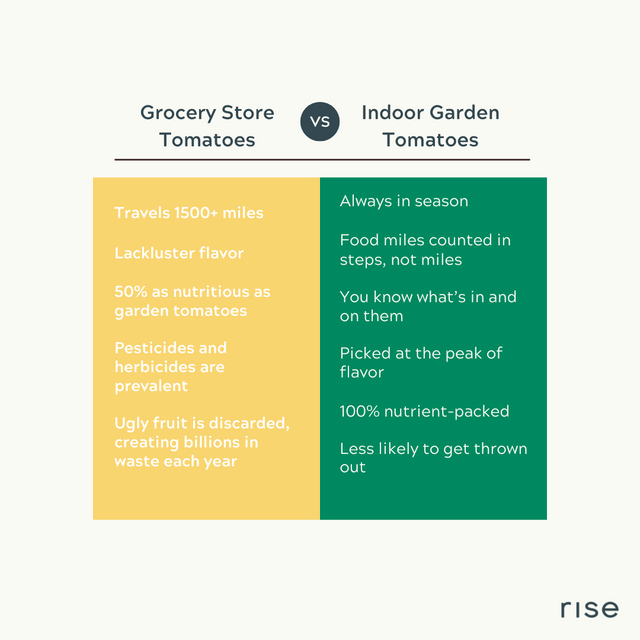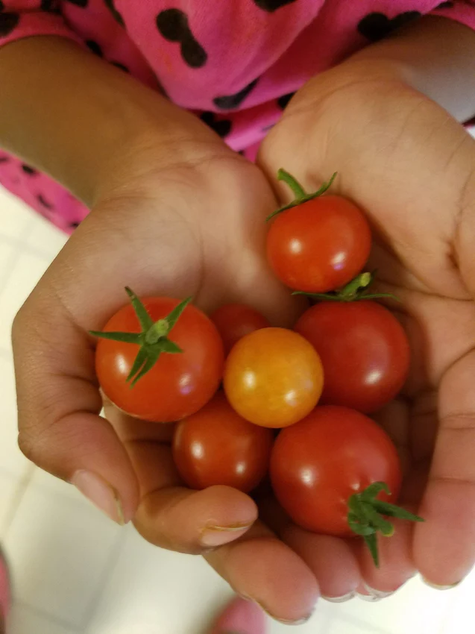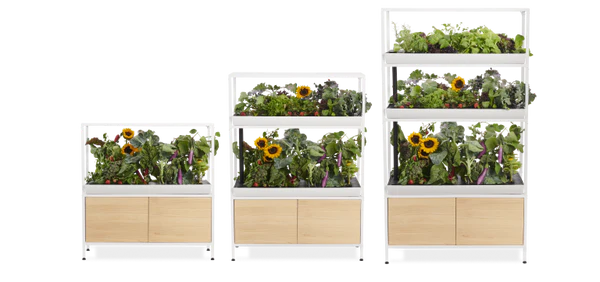We might be a little biased but there's a truth we all know: grocery store tomatoes are awful--especially in the fall when your access to summer farmer's markets are gone and it's too chilly in your yard to get any more tomatoes from your garden.
There's a reason for it though--the food supply chain was created to meet demand and not curating the most flavorful, nutritious vegetables. Let's take a deeper look at the journey of a grocery store tomato and why we thinking growing your own is the way to go.

The life of a grocery store tomato
Travels 1,500+ miles
Like or not, summer is over and your average grocery store tomato is traveling over 1,500 miles to make to it to store shelves.
Lackluster flavor
A good tasting tomato is what caprese dreams are made of. But grocery store tomatoes? They’re pale, tasteless and watery. IYKYK.
50% as nutritious as garden tomatoes
We love the flavor of fruits and veggies but we want them to be nutritious too. Do you really want to eat twice as many veggies to get the nutrients your body needs? Not many of us are signing up for that but our food supply chain requires fresh produce to be picked before its ripe and stored in containers to travel for two weeks before hitting grocery store shelves.
Pesticides and herbicides are prevalent
Yes, you can choose organic tomatoes and this will help some but there’s more to it than just not using a pesticide. What’s in the soil or the water? What’s the air quality or pollution levels? It all matters when deciding what goes in our bodies.
Garden tomatoes are peak summer rewards but when you grow indoors, tomatoes are always in season.
Always in season
When you grow tomatoes indoors, it’s always tomato season. With proper crop planning, you’ll never run out of tomatoes.
Grown at home
Growing your plants inside your home means you have more control. You know the water source, plant food and air quality. You know what’s in and on your tomato because you are counting your food miles in steps.
Picked at the peak of flavor
One of the top benefits of gardening is that you have access to the freshest vegetables. You harvest them from your garden when they are ripe and full of flavor, and then cook them for dinner.
100% nutrient-packed
When you harvest and eat your veggies the same day, you are packing your plate with the highest nutrient levels possible.
Less likely to get thrown out
In the U.S. alone, 1/3 tomatoes were thrown out last year. When you grow what you eat, you reduce food waste and save money.

